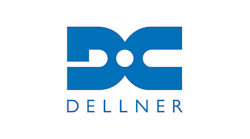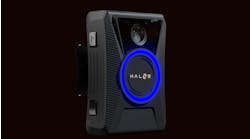L.B. Foster Co.
Solid Stick Friction Management
L.B. Foster offers two solutions, low coefficient of friction (LCF) and high positive friction (HPF) solid lubricant sticks, to target friction related issues such as noise and wheel/rail wear in your transit system. The proprietary formulation used in these lubricant sticks can effectively optimize friction levels without affecting traction and braking. Unlike traditional friction control methods such as oils and greases, LCF and HPF do not contaminate the rail and surrounding vehicle structure. Instead, the lubricant sticks are applied with precision to the wheel using a train mounted application system.
Darren Loo
Koppers Inc.
CENTER LINER
The advanced design of the patented CENTER LINER bonded insulated rail joint increases joint stiffness and extends joint longevity by integrating a high-strength insulator within the center area of the joint. The mechanical wedging action created by the fit between the joint bars, the CENTER LINER insulator and the rail delays unzipping that typically begins at the high stress end post area.
Pat Boario
Southco
Heavy-Duty Actuators AC-20 and R3-22
The AC-20 and R3-22 heavy-duty, paddle-style actuators from Southco provide multiple points of actuation, allowing two connected rotary latches to be activated remotely by one actuator. The new actuators are constructed from corrosion-resistant materials, making them well-suited for exterior applications that require robust performance.
AC-20 and R3-22 Actuators are an ideal solution for doors and panels that require remote actuation of several connected rotary latches. When opening a large access panel on a piece of off-highway equipment for instance, the end user can easily release both latches at the same time by activating one actuator, facilitating operator entry. Combined with Southco R4 Rotary Latches and AC Cables, these actuators create a complete rotary latching system, providing secure, reliable, remote latching for interior and exterior applications.
The AC-20 and R2-22 are available in polished chrome or black powder-coat finishes, and feature a rugged, contoured paddle design for enhanced grip, key locking security and secure push-to-close functionality.
Rachel Kane
Dellner Inc.
Automatic Couplers
Automatic couplers provide automatic connections for railway vehicles. Dellner's automatic couplers include safe and reliable mechanical, pneumatic connections, as well as electrical connections between vehicles. Automatic couplers provide an optimized energy absorption solution for maximum protection of the vehicle and the passengers.
Coupling is carried out at low speed without manual assistance, ensuring maximum safety for this critical maneuver. It results in a rigid, slack-free and fully latched connection. With the designed centering and support arrangement, it allows for both horizontal and vertical track variations.
Uncoupling the mechanism head can be carried out either remotely from the driver's cab or at the coupler itself using manual release. Once the vehicles have moved apart, the couplers are automatically reset, ready to be coupled again. Special products, such as foldable or retractable couplers, are also available.
Southco
AC-EM 05 Electronic Actuator
Southco’s new compact electronic actuator, the AC-EM 05, simplifies the upgrade from mechanical to electronic access.
When connected to an electronic access control device, the AC-EM 05 Electronic Actuator can be used to actuate a mechanical latch to remotely open or unlock a door or panel. The AC-EM can also be used to secure compartments on smaller vehicles that feature open designs and are constantly in motion, like UTVs.
Rachel Kane
ITT Cannon
CTC Series
is a simple-to-install, low-maintenance cable-to-cable interconnect solution, suitable for a variety of critical rail applications where reliable signal circuits are critical to performance. The CTC Series utilizes the industry-proven Trident T2P and T3P contact technology that enables contacts to be hand inserted and eliminates the need for sealing plugs and wedge locks. Delivering a high density contact solution with a minimized footprint, CTC is ideal for use in sensor applications, inside the cab systems such as wipers, controllers, doors and lighting in today’s connected railway.
ITT Veam
Power Plate
is a fully customizable multi-pole high-power interconnection system ideal for applications where a minimized footprint is required, such as connecting railcars to bogies, traction motors and converters. With an operating voltage up to 1200 V, Power Plate meets the latest smoke and fire rail standards. It delivers salt spray resistance for up to 500 hours with conductive plating and 1000 hours with non-conductive plating. ITT Veam Power Plate was the solution chosen by Alstom when they needed an interconnect solution that would support sustainable, eco-friendly urban rail service in Rio de Janeiro for the 2016 Olympics.
ITT Veam
CIR M12 Connectors
meets today’s increasing data transmission requirements with their ability to transfer data from Ethernet, WTB and MVB in a single connector. Installed on the latest generation of Italy’s high-speed trains, CIR M12 can support an industry-leading 10 Gigabit-per-second Ethernet (up to Class FA ISO/IEC 11801 channel performance). The CIR M12 has a minimized circular footprint and is fully compliant with the latest rail standards for fire and smoke. Developed specifically for rail vehicle-to-vehicle interconnection, CIR M12 connectors deliver optimal sealing in addition to extreme shock and vibration resistance in the harshest rail car environments.
ITT Veam
CIR Blue Generation
RoHS compliant plating delivers best-in-class durability, conductivity and shielding performance. A combination of Zinc, Nickel and Chrome III, Blue Generation delivers salt spray resistance up to 500 hours and offers excellent conductivity and shielding at the same time. Able to withstand temperatures between minus 55 degrees C and 125 degrees C, Blue Generation plating is available on all aluminum-based ITT Veam connectors, which already meet the mechanical, electrical, fire, smoke and toxicity requirements of the global rail market.






